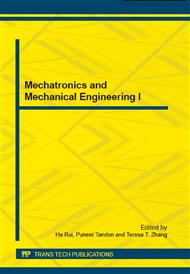p.104
p.111
p.117
p.122
p.128
p.138
p.143
p.148
p.153
Autodyn-2D Simulation of Shaped Charge Jet Formation and Penetration Mechanism into Multi-Layered Shielded Target
Abstract:
In this work, the shaped charge jet formation depends on different parameters which can has effect on jet behavior such as jet velocity, breakup and penetration. Jet radius or liner thickness, shell thickness, liner material density, α angle and stand-off distance are evaluated in purpose to investigate their effect on performance of shaped charge jet velocity and jet breakup phenomena, also we investigate the effect of stand-off distance on shaped charge jet penetration into steel target. We also studied the performance of some protective shields materials in order to assure more protection for vehicle structure against shaped charge jet penetration. For that, different materials were used as armors such as: kevlar epoxy, polyethylene, glass epoxy, steel-1006 and Al2O3 ceramic. These protective shields were evaluated in order to show their performance against shaped charge penetration into target. To do so, adopted explicit dynamic analyzing program Autodyn basing on finite element were used to simulate shaped charge jet formation and penetration. Autodyn-2D simulationshighlight the efficiency of our work comparing with the experiments done in literature and Birkhoff’s theory. In other terms, increasing in shell thickness, alpha angle and liner densityenhance jet breakup time, protective shields layered armor of steel-1006, steel 1006 with polyethylene and steel-1006 with Al2O3ceramic give more protection for structure against shaped charge jet penetration comparing with others armors.
Info:
Periodical:
Pages:
128-137
Citation:
Online since:
October 2014
Authors:
Keywords:
Price:
Сopyright:
© 2014 Trans Tech Publications Ltd. All Rights Reserved
Share:
Citation:


